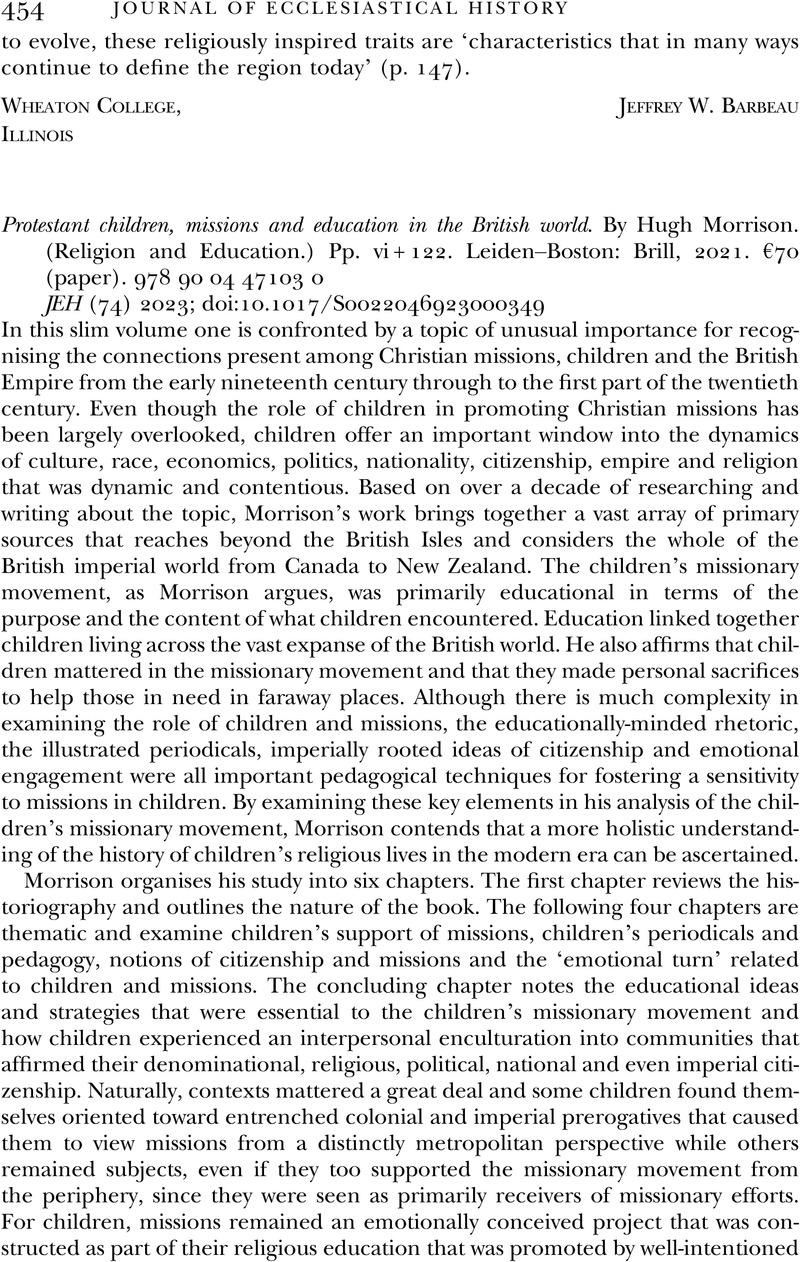No CrossRef data available.
Article contents
Protestant children, missions and education in the British world. By Hugh Morrison. (Religion and Education.) Pp. vi + 122. Leiden–Boston: Brill, 2021. €70 (paper). 978 90 04 47103 0
Review products
Protestant children, missions and education in the British world. By Hugh Morrison. (Religion and Education.) Pp. vi + 122. Leiden–Boston: Brill, 2021. €70 (paper). 978 90 04 47103 0
Published online by Cambridge University Press: 25 April 2023
Abstract
An abstract is not available for this content so a preview has been provided. Please use the Get access link above for information on how to access this content.

- Type
- Reviews
- Information
- Copyright
- Copyright © Cambridge University Press 2023



